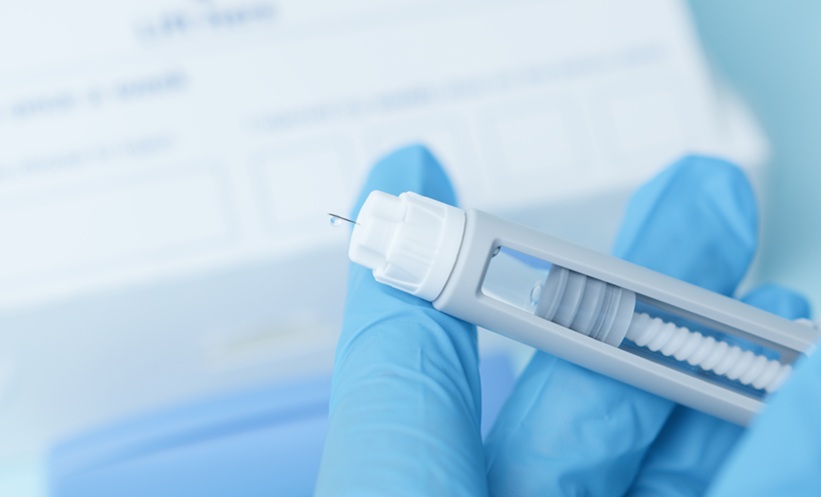Edel O’Toole | Professor of Molecular Dermatology and Co-director of HARP Clinical PhD programme, Blizard Institute, Queen Mary University of London; Emeritus Centre Lead, Centre for Cell Biology and Cutaneous Research, London; Consultant Dermatologist at the Royal London Hospital, Barts Health NHS Trust, London, UK
Citation: EMJ Dermatol. 2023; DOI/10.33590/emjdermatol/10304259. https://doi.org/10.33590/emjdermatol/10304259.
![]()
After completing your medical degree, what inspired you to complete a PhD on keratinocyte biology?
I was always interested in biology and science. As a child, I loved identifying wild flowers and this is not all that dissimilar to dermatology, where we look and make a diagnosis. When I first started in dermatology, I could see that there were lots of opportunities for research in the field. I decided to go to the USA from Ireland because of the encouragement of Rosemarie Watson, and I was fortunate to land in the laboratory of David Woodley, who nurtured my interest in keratinocyte biology and specifically extracellular matrix.
With over 131 publications to your name, which areas of dermatology research do you believe require the most attention?
Single cell and spatial transcriptomics are leading to high impact publications in the field of dermatology, but understanding the biology of all the lists of annotated genes is important. There are at least 2,000 skin disorders and there is still a lot to be learned about many of these disorders at a molecular level. There are many rare and common disorders that we can learn a lot more about. Artificial intelligence will likely help with pruning ‘big data’ in the future.
What are the most significant changes you have seen in the management of rare skin diseases during your time working in the field?
In the last 5 years there is much more hope that there will be effective treatments and pharmaceutical companies are showing interest in rare skin diseases. Some of the major advances have been in the field of epidermolysis bullosa (EB). This includes the landmark paper by Hirsch et al.,1 who used LAMB3 cDNA transduced corrected autologous transgenic keratinocyte cultures to regenerate the entire epidermis in a child with a homozygous mutation in LAMB3, causing junctional epidermolysis bullosa. In another type of EB, recessive dystrophic EB (RDEB) caused by mutations in Type VII collagen (COL7A1), Peter Marinkovich, from Stanford, California, USA, working with Krystal Biotech (Pittsburgh, Pennsylvania, USA), have used topical herpes simplex virus type 1-based gene therapy (Beremagene geperpavec) to deliver COL7A1 and restore Type VII collagen expression.2 There are now also trials of topical sirolimus (rapamycin) and TRPV3 antagonists in pachyonychia congenita, a rare disorder causing painful, disabling plantar calluses. I do a lot of work with Pachyonychia Project, an amazing support group for patients with pachyonychia congenita, and the patients are really enthusiastic about participating in clinical studies.
As chairman of the Medical Advisory Board of the Ichthyosis Support Group, could you share some of the recent advances in this field that excite you the most?
We are learning a lot more about ichthyosis and in particular about cytokines that are expressed in severe ichthyosis skin. This is leading to repurposing of biologics such as ustekinumab and dupilumab in various types of ichthyosis. We still need to learn more about how biologics affect the skin barrier in ichthyosis, so we need to do more clinical trials. We also know a lot more about the genetic basis of ichthyosis. For example, there are now >14 genes known to cause non-syndromic autosomal recessive congenital ichthyosis. If necessary, we now can obtain a genetic diagnosis fairly quickly in 80% of patients with ichthyosis. The National Health Service (NHS) in the UK is now offering genome sequencing for unwell neonates, which will include severe ichthyosis and other severe rare genetic disorders.
What are you most proud of from your time on the European Society for Dermatological Research (ESDR) board from 2018–2022 and specifically as Chair of the Diversity Taskforce?
It was an interesting period as we did not have an ESDR meeting in 2020 and the meeting was virtual in 2021. I co-organised the COVID-19 symposium with Curdin Conrad and invited Michael Ryan, Executive Director of the World Health Organization (WHO) Health Emergencies Programme, who led the operational response to the COVID-19 pandemic worldwide, to join the symposium for a Question and Answer session. He accepted, which was fabulous (he was in my class in medical school). As chair of the Diversity Taskforce, I helped organise Global Health Awards for young dermatology trainees and scientists to attend the ESDR from East Africa and Burma in 2019, and subsequently Tunisia, Egypt, South Africa, and Thailand in 2022. I hosted a round table event around ancestral diversity and from that we came up with a plan going forward to try and make the ESDR more inclusive. There has been progress but we always need to do better.
What are the greatest challenges you have faced in both your research and clinical career? How did you overcome these?
Being a clinician scientist is like being on an intermittent roller coaster. There are moments of great joy, such as when a student does really well in their PhD viva, my favourite paper gets accepted in a great journal, a grant gets accepted, or research in the lab shows a truly unexpected finding. On the other hand, there are also less joyous and frustrating moments, when a grant or paper gets rejected, the keratinocytes stop growing, or some infection occurs and work comes to a standstill.
I think it is important if you are doing basic science research that the week is compartmentalised. Time should be allocated for clinic and at a set time you should go back to the laboratory environment; so in effect time management. I think building resilience is also important as a clinical academic, so one can cope with the frustrating moments. It also important to have a trusted mentor whom you can bounce ideas off. The mentor may just say what you were thinking but the reassurance is always good.
In my clinical career, the increase in computer work, general bureaucracy, and regulation of doctors has been irritating. My main focus in the clinical aspect of my career is getting the patients better and I try to put those things to the back of my mind.
What advice would you give to young clinicians entering the field of dermatology?
Be curious; do not take anything for granted; believe the data; believe what you see, both in clinic and in the laboratory; and find an enthusiastic mentor. If you want to do research, which I hope you do, there are still lots of discoveries to be made and we badly need more people who can bridge the gap between the clinic and the laboratory. Get the best laboratory training possible, which will set you up for a clinician scientist career.







